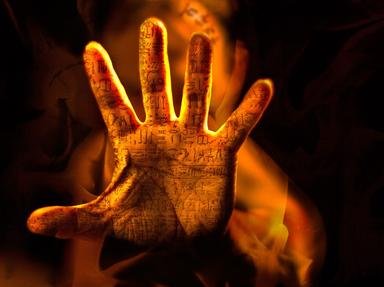Quiz Answer Key and Fun Facts
1. As you walk in the main entrance, a mosaic inscription above the door catches your eye. "Ill MET by moonlight," it reads in careful curled letters, recalling one of the most famous quotations to include the word "met." The line comes from what scene in the Shakespeare canon?
2. Just past the coat check, you spot a large display of weights and measures. Rulers, graduated cylinders, thermometers, brass weights and a stopwatch combine to explain the METric system, which is now the most commonly used system of measurement in the world. There are only a few countries left that don't use metric -- but which was the first to adopt it?
3. As you enter the biology exhibit, you realize that we owe our very beginnings to MET. Every person's first cell was created by the fusion of two gaMETes: an ovum, or egg, from the mother, and a sperm cell from the father. Each parent has two complete sets of chromosomes in his or her genetic code; how many sets of chromosomes are encoded in a single gamete?
4. Passing into an exhibit on famous people, you notice a bust of Klemens von METternich scowling down at you. You recall that he was an important diplomat and politician -- in fact, your history books all referred to an "Age of Metternich" between Napoleon's defeat at Waterloo and the revolutions of 1848. From what country did this statesman come?
5. You pass by a bust of METhuselah, the oldest man described in the Bible, and stop in front of the photograph of someone who died far too young. This black Chicago child was 14 in the summer of 1955 when, visiting relatives in Mississippi, he was kidnapped and brutally murdered by local racists -- for the "crime" of whistling at a white woman. Widely publicized images of his mangled body energized the nascent American civil rights movement. Who was this child, whose death inspired songs, poems, plays, and novels?
6. A 1969 photograph of a very ordinary baseball team heads the last exhibit in the Hall of People. After a mediocre season start, the club came from nowhere to sweep the pennant race and take the World Series; their pitcher was later involved in a commercial saying, "If [we] can win the World Series, America can get out of Vietnam." What was the name of this consistently underrated New York team?
7. You step into a large booth on the second floor. Footage of a Black Sabbath concert is showing on a projection screen, and through headphones you can listen to bands from Judas Priest to Rage Against The Machine. That's right: this room is devoted to heavy METal music. Which of the following has NOT been proposed as a possible explanation for the origin of the term "heavy metal"?
8. Near the elevators is a small chemistry exhibit with a nice display on a famous fuel. Each molecule is devised of one atom of carbon combined with four hydrogen atoms; the result is the main component of natural gas, and (more distressingly) is a significant greenhouse gas. What is this chemical compound, also known as "marsh gas"?
9. Your eye falls on a stunning picture: a trail of light stretching across a starry sky. It's a coMET! These balls of ice pass by the Earth during a highly elliptical orbit across the solar system; the beautiful tail is produced by heat and light from the sun. The explanation of comets was a major victory for astronomers. What was the first comet whose return was successfully predicted?
10. As you leave the building, your attention is drawn to one last display: a small television displaying scenes from a famous Nintendo video game. "METroid" is a series of games following the adventures of bounty hunter Samus Aran; the screen is showing the very first of these games, released in 1986 for the Famicom Disk System. What genre best describes "Metroid"?
Source: Author
CellarDoor
This quiz was reviewed by FunTrivia editor
trident before going online.
Any errors found in FunTrivia content are routinely corrected through our feedback system.
